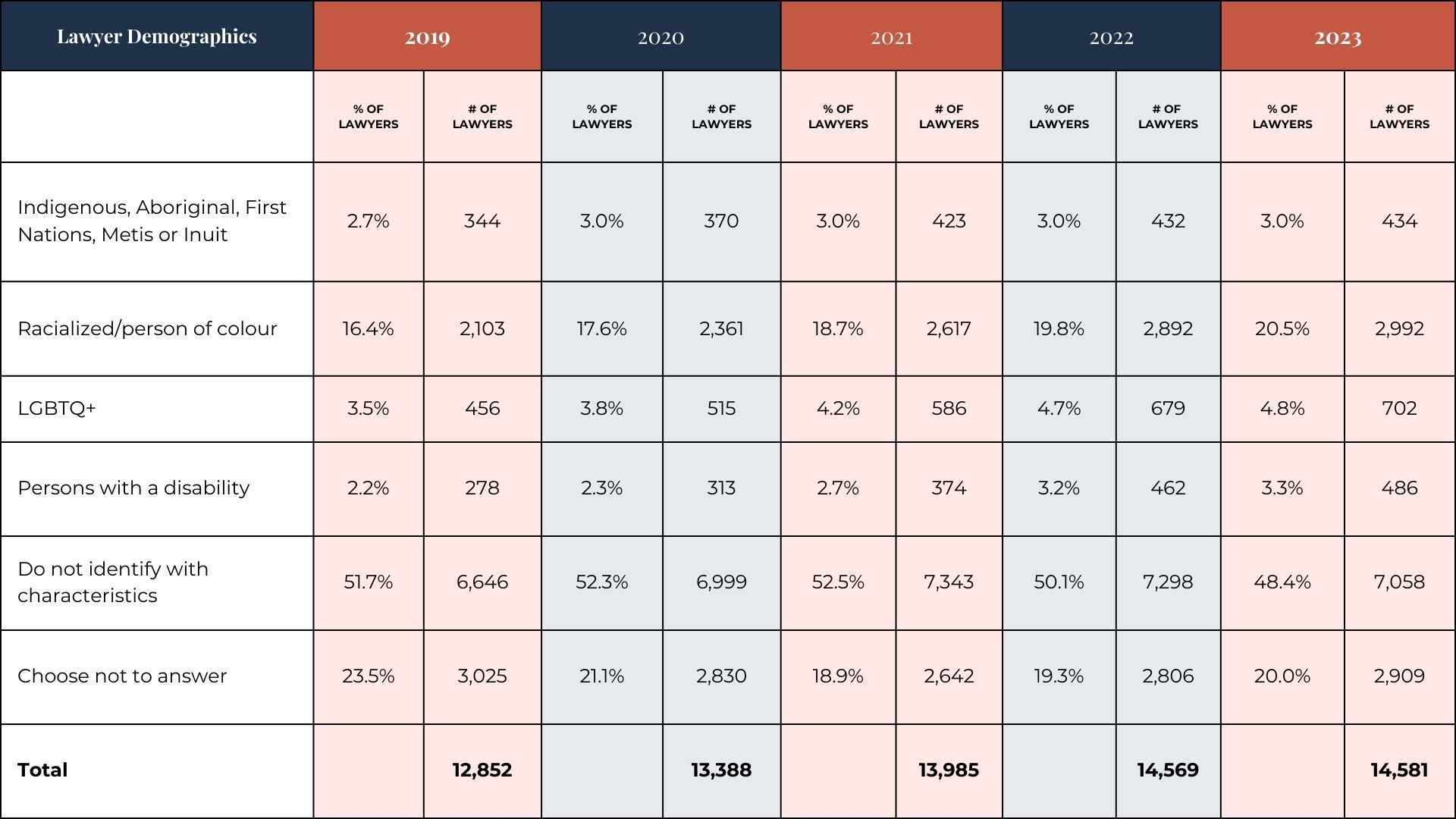Each year, lawyers are asked to volunteer information about themselves anonymously in the Annual Practice Declaration (APD). The information helps the Law Society better understand demographic trends, identify and remove barriers for entering and remaining in the profession, and develop initiatives to promote equity, diversity and inclusivity in the legal profession. Collecting and publicizing diversity statistics is also a part of the Law Society’s Diversity Action Plan.
The data shows small increases over the years in the percentages of BC lawyers who identify as part of a diverse group. While there have been increases in diversity, there is much work that still needs to be done to ensure the legal profession fully reflects the diversity of our province.
The APD survey remains a key source of data, and the Law Society is exploring ways to encourage greater participation from lawyers, so that we can further improve our understanding and better guide our efforts.

-
- Rule of Law and Lawyer Independence
- Lawyer Independence and Self Regulation
- Statements on Issues that Affect the Rule of Law
- Secondary School Essay Contest
- Rule of Law Lecture Series
-
- Rule of Law Matters Podcast
- Introduction to the Rule of Law transcript
- What is the rule of law vs. rule by law? transcript
- Lawyer Independence and the Rule of Law transcript
- The Rise of Authoritarianism and Assaults on the Rule of Law, Part 1 transcript
- The Rise of Authoritarianism and Assaults on the Rule of Law, Part 2 transcript
- COVID 19 and the Rule of Law, Part 1 transcript
- COVID 19 and the Rule of Law, Part 2
- Privacy and the rule of law
- Authoritarianism, closer to home
- Judges and the rule of law transcript
- COVID-19 and returning to "normal"
- The role of prosecutors in criminal justice and the rule of law transcript
- Rule of law news: a year in review
- Racism, equity, diversity and inclusion and the rule of law
- A conversation with Marie Henein on the role of lawyers in society
- Improving Mental Health for the Legal Profession
- Lawyer Development Initiatives
